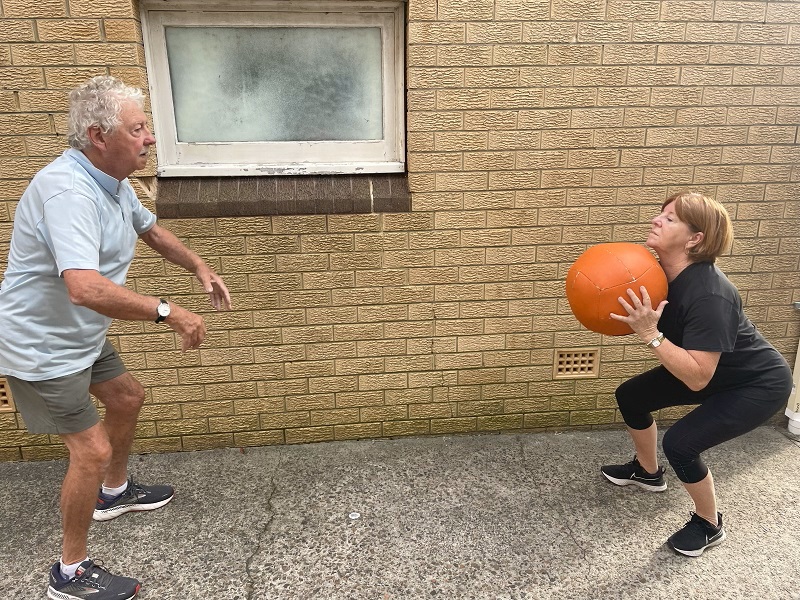The importance of grip strength
What is grip strength and why is it so important?
How can you measure grip strength?
There are various ways to measure grip strength such as a hand dynamometer, grippers, pull ups, farmers carry or hanging hold.
Hand dynamometer: is an evaluation tool that’s used to measure isometric grip force (hand grip strength).
Grippers: is a tool used for testing and increasing the strength of the hands. The specific form of grip strength is called crushing grip.
Pull ups: is an upper body strength exercise. The pull up is a closed-chain movement where the body is suspended by the hands, gripping a bar.
Farmers carry: is a strength and conditioning exercise in which you hold a heavy load in each hand while walking for a designated distance.
Hanging hold: is a bodyweight exercise that targets muscles in your upper body whilst hanging of rings or a pull up bar. It helps and improves your grip strength.
Let’s talk about pull ups!
1. Enhanced grip strength
Pull-ups bring a substantial improvement in grip strength. A strong grip is vital for daily tasks, from carrying groceries to opening jars. Maintaining robust grip strength can also significantly enhance your quality of life as you age. Pull-ups are the epitome of functional strength training.
2. Longevity and healthy aging
Beyond the physical benefits, mastering pull-ups can positively impact your longevity and overall health. Maintaining muscle mass and bone density becomes increasingly important. Pull-ups, as a weight-bearing exercise, promote both. Improved bone health and increased muscle mass will help to reduce the risk of fractures and osteoporosis.
3. Increased mobility and physical independence
Pull-ups mimic real-world movements like climbing and pulling yourself up from various positions. This functional aspect of the exercise translates into improved everyday mobility and independence, which are crucial for a fulfilling and active life in your later years.
4. Aesthetic perks
Pull-ups are a versatile compound exercise that engages multiple muscle groups simultaneously. They help build a strong and defined upper body, including the back, shoulders, arms, and core. This not only contributes to an aesthetically pleasing physique but also improves posture and overall body strength.
Let’s talk farmer’s carry!
1. Improved Grip Strength:
Holding heavy weights for an extended period during the farmer’s carry requires a strong grip. Regular practice of this exercise can significantly increase grip strength, which is beneficial for activities in daily life as well as sports and recreational activities.
2. Shoulder and Postural Stability:
Holding weights by your sides while walking requires shoulder stability and proper posture. The farmer’s carry helps strengthen the muscles that support the shoulders and spine, promoting better posture and reducing the risk of injury.
3. Enhanced Core Strength:
The farmer’s carry engages the muscles of the core, including the abdominals, obliques, and lower back, to maintain stability and posture while walking with the weights. This helps strengthen the core muscles, leading to better balance and stability in various movements and activities.
4. Functional Strength:
The farmer’s carry mimics real-life activities like carrying heavy grocery bags, luggage, or other objects. By training the body to handle heavy loads in a standing position, this exercise improves functional strength that translates into improved performance in daily tasks and activities.
Let’s talk hanging hold!
1. Stretching and Decompression:
Hanging can help to decompress the spine and stretch the muscles of the shoulders, back, and hips. This can alleviate tension and tightness in these areas, improve flexibility, and promote better posture.
2. Accessible and Scalable: Hanging requires minimal equipment (just a bar or sturdy overhead structure) and can be easily scaled to accommodate different fitness levels. Beginners can start with shorter hangs or use assistance, while more advanced individuals can challenge themselves with longer hangs or more challenging variations.
3. Joint Health: Hanging can promote joint health by allowing the shoulders and spine to move through their full range of motion. This can help to maintain joint mobility and function, reducing the risk of stiffness and discomfort.
4. Increased Shoulder Stability: Hanging activates the muscles around the shoulder blades, rotator cuff, and upper back, promoting shoulder stability and strengthening these important muscles. This can contribute to better shoulder health and reduce the risk of injuries.





